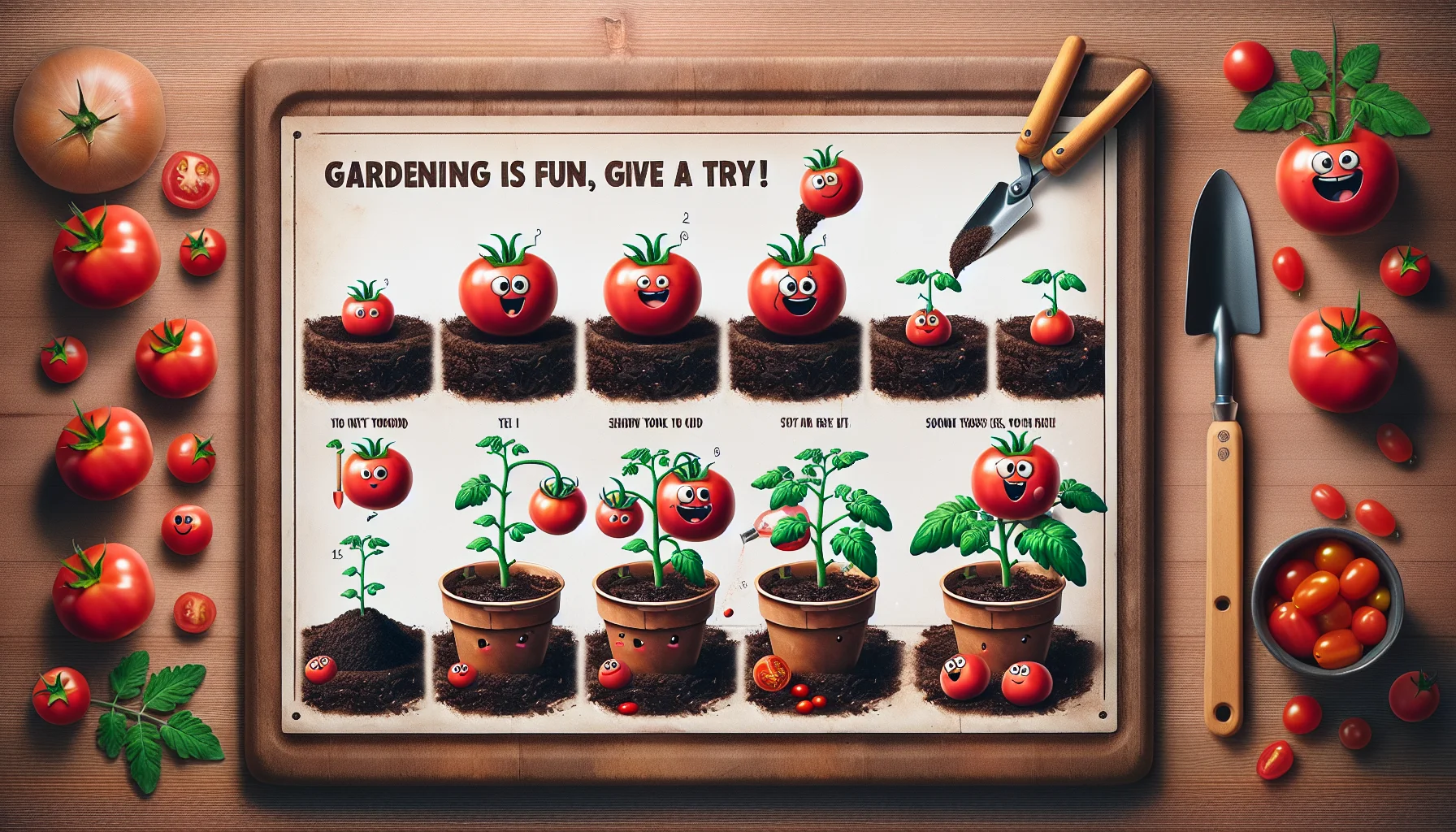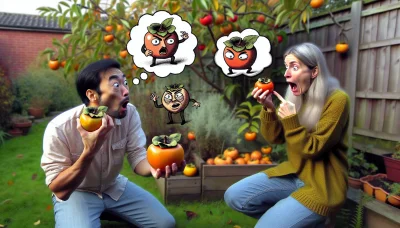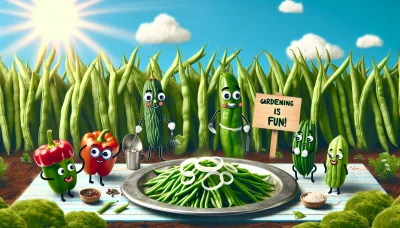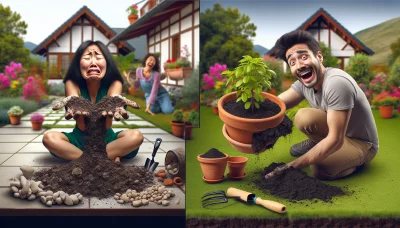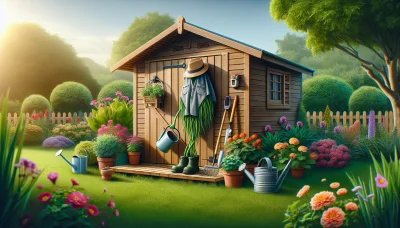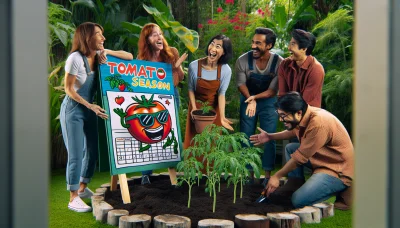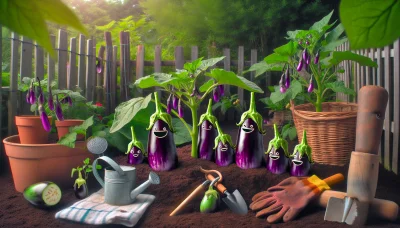How to take care of a tomato plant Quiz
Test Your Knowledge
Question of
How to Take Care of a Tomato Plant
Tomato plants are a staple in many gardens, cherished for their juicy fruits that are versatile in culinary uses. Proper care is essential to nurture healthy plants that yield abundant tomatoes. This includes understanding their need for sunlight, water, and nutrient-rich soil, along with regular maintenance practices such as pruning and staking. Let's delve into the essentials of tomato plant care to ensure a bountiful harvest.
Choosing the Right Variety
When it comes to gardening, especially with tomatoes, one of the most crucial decisions you'll make is selecting the right variety for your specific conditions. Different tomato varieties have unique requirements and characteristics, making some better suited for certain climates and spaces than others. Whether you're dealing with a cool, short growing season or a warm, longer one, there's a tomato variety that's just right for your garden. Additionally, considering the space you have available, whether it's a sprawling garden or a small balcony, will guide you in choosing between determinate and indeterminate varieties. Understanding these differences and making a thoughtful selection can greatly impact the success and yield of your tomato plants.
Planting Your Tomatoes
- Choose a sunny spot in your garden that receives at least 6 hours of sunlight daily.
- Prepare the soil by adding compost or well-rotted manure to enrich it. Ensure the soil is well-draining.
- For tomato seeds: Plant seeds indoors 6-8 weeks before the last frost date. Plant seeds about 1/4 inch deep in seed starting mix. Keep the soil moist and in a warm spot until germination.
- For tomato seedlings: Wait to plant outside until after the last frost date and when nighttime temperatures stay above 50°F (10°C).
- Space tomato plants 18 to 24 inches apart in rows that are 3 to 4 feet apart. This spacing allows for adequate air circulation and growth room.
- Dig holes slightly deeper than the container they are in. For seedlings, plant them up to their first set of true leaves to encourage strong root development.
- Water the plants thoroughly after planting. Keep the soil consistently moist but not waterlogged.
- Apply mulch around the plants to help retain soil moisture and control weeds.
- Consider using stakes or cages to support the plants as they grow. This helps prevent diseases and keeps fruit off the ground.
Watering and Feeding Your Tomato Plants
Tomato plants require consistent moisture levels to thrive and produce fruit. It's essential to water them deeply and regularly, aiming for at least 1 inch of water per week, but possibly more during hot, dry spells. Avoid overhead watering to reduce the risk of disease. Instead, water at the base of the plant to keep moisture off the leaves and direct it where it's most needed. When it comes to fertilizing, tomatoes benefit from a balanced fertilizer applied every four to six weeks throughout the growing season. Start with a higher phosphorus mix to encourage good root development, then switch to a balanced or higher potassium fertilizer to support fruit production. Always test your soil first to avoid over-fertilization, which can be just as harmful as under-fertilization.
Pruning and Supporting Tomato Plants
Pruning and supporting tomato plants are crucial practices for any gardener looking to maximize their harvest and maintain healthy plants. Pruning helps to increase air circulation and sunlight exposure to the lower parts of the plant, reducing the risk of diseases such as fungal infections. It also helps in directing the plant's energy towards the production of fruits rather than excessive vegetative growth. On the other hand, supporting tomato plants as they grow is essential for keeping the fruit and branches off the ground, preventing rot and pest infestations. Various methods for supporting tomato plants include using stakes, cages, or trellises. Each method has its benefits and can be chosen based on the type of tomato plant, the available space, and the gardener's preference. Combining pruning and proper support techniques ensures robust plant growth, leading to a bountiful and healthy tomato harvest.
Pest and Disease Management
Common Pests and Diseases Affecting Tomato Plants
-
Aphids
- Organic Prevention/Treatment: Introduce beneficial insects like ladybugs or apply neem oil.
- Chemical Prevention/Treatment: Use insecticidal soaps or systemic insecticides.
-
Tomato Hornworms
- Organic Prevention/Treatment: Handpick and remove hornworms or use Bacillus thuringiensis (Bt).
- Chemical Prevention/Treatment: Apply appropriate insecticides as a last resort.
-
Early Blight
- Organic Prevention/Treatment: Use copper fungicides and ensure good air circulation around plants.
- Chemical Prevention/Treatment: Apply fungicides containing chlorothalonil or mancozeb.
-
Late Blight
- Organic Prevention/Treatment: Remove affected foliage and apply copper fungicides.
- Chemical Prevention/Treatment: Use fungicides with active ingredients like mancozeb or chlorothalonil.
-
Spider Mites
- Organic Prevention/Treatment: Increase humidity around plants or use neem oil.
- Chemical Prevention/Treatment: Apply miticides specifically designed for spider mite control.
-
Whiteflies
- Organic Prevention/Treatment: Use yellow sticky traps or apply insecticidal soap.
- Chemical Prevention/Treatment: Use systemic insecticides for severe infestations.
Harvesting and Storing Tomatoes
Knowing when tomatoes are ripe for harvesting is key to enjoying their full flavor and nutritional benefits. A ripe tomato will have a deep, uniform color, depending on its variety, and will slightly yield to gentle pressure. It should still be firm and detach easily from the stem with a light twist. After harvesting, storing tomatoes correctly is crucial to extending their shelf life. For best results, keep them at room temperature away from direct sunlight. Storing tomatoes in a single layer, possibly with the stem side down, can prevent bruising and rotting. Avoid refrigerating tomatoes as this can cause them to lose their flavor and become mealy in texture. If you have too many ripe tomatoes, consider processing them into sauces or salsas, which can be easily frozen or canned for future use.
